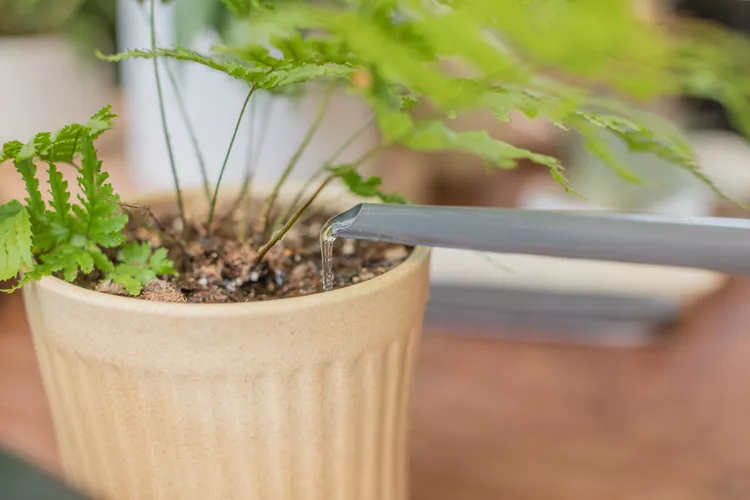It’s perfectly reasonable to be concerned about the water you provide to your houseplants. However, if your tap water is safe for you to drink, it’s usually fine for your plants, with a few exceptions. We turned to a couple experts to determine when you should and should not use tap water for your houseplants.
- Tom Knight owns ourhouseplants.com, has been growing houseplants for over 30 years, and is a member of the Royal Horticultural Society.
- Michael Clarke is a landscape architect, horticulturist, and founder of Yardwork, an online plant nursery selling houseplants.
“Around 95 percent of typical houseplants are OK with long-term use of tap water, especially if you flush the potting mix every so often,” says Tom Knight, owner at ourhouseplants.com. Learn about chlorine, chloramine, and other potential issues here.
What's the Source of Your Tap Water?
Your tap water may be from a couple of sources, depending on where you live. That source may or may not be great for houseplants.
Many rural families get water from a well, so their tap water is well water. However, most people in the United States get tap water from a community or municipal water system. All municipal water systems must be tested and disinfected for public health. Several chemicals are used, with chlorine being a common choice. Your municipal water company is required to provide an annual document called a confidence report stating their practices and chemicals used.
Potential Problems with Using Tap Water for Houseplants
Chlorine is possibly the most common disinfectant chemical for water systems. Other possible chemicals added to municipal water include chloramine and fluoride. The low levels of these chemicals aren’t harmful to most plants in small doses, but effects can accumulate.
“While tap water can be used to water houseplants, some of the chemicals present in tap water, such as chlorine, fluoride, limescale, and pH additives, can be harmful to plants over time as they build up in the soil,” says Michael Clarke, landscape architect and horticulturist.
Clarke explains, “If you use a home water softening system to reduce hard water spots and help with your skin and hair, the excess salts in the water can be extremely detrimental to plants. Over a period of time, the additional sodium in the water becomes toxic to plants.”
How to Flush Chemicals from Potting Soil
Low-level chemicals can build up in the potting soil and reach harmful levels. This problem can usually be solved by flushing the pot and soil in the sink.
- Place the plant in the sink and allow water to run into it until clear water comes from the drainage holes. Set the faucet on a low setting, not a blast.
- Keep flushing until enough water to fill the volume of the pot three or four times passes through the soil.
- Leave the pot in the sink for an hour to finish draining so there won’t be a mess when you put it back in its spot.
Benefits of Watering Plants with Tap Water
The biggest benefit of using tap water for your houseplants is convenience, followed by cost. Getting water from the tap in the kitchen is far less hassle than buying a jug at the store or collecting it from the roof. If it’s easy, you’re more likely to water often and as necessary rather than forgetting or putting it off. It’s also cost-effective. Even in cities with high water utility prices, tap water is far cheaper than bottled water.
Since most plants aren’t bothered by tap water, it’s probably OK to use it. Plan on flushing your houseplants once or twice yearly, especially if you apply fertilizer often.
Exceptions: Tolerant and Sensitive Plants
While most houseplants are unphased by tap water, a few may be more picky. “Parlor palm and spider plant are especially sensitive to fluoride, and you may notice that they develop brown tips over time when exposed to these elements,” says Clarke.
Plants whose native habitat includes especially clean water or specialized conditions are also more likely to be affected. “Generally, these are any plants that grow natively in specialized locations such as peat bogs. This will be any carnivorous plant, like Venus fly trap and pitcher plants. Other common houseplants, like calatheas, spider plants, and even the peace lily can sometimes have negative symptoms from tap water, such as brown leaf edges,” says Knight.
For these finicky plants, rainwater or bottled water is a better choice, as home filtration systems do not easily remove the chemicals they’re susceptible to.




















